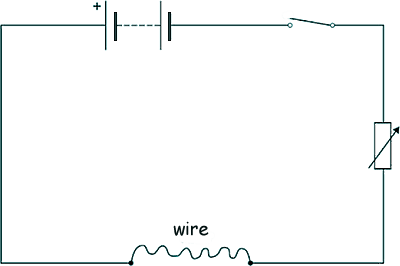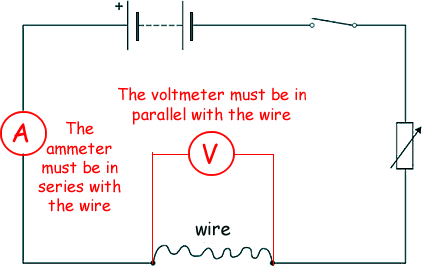GCSE Standard Questions: Electric Circuits Q2. A student investigated how the resistance of a piece of nichrome wire varies with length. The diagram shows part of the circuit that the student used.
Copy the circuit in the space below, adding an ammeter and a voltmeter so that the resistance of the wire can be calculated. Be careful to use the correct symbols.
[3 marks] (b) Describe how the student would obtain the data needed for the investigation. Your answer should include a risk assessment for one hazard in the investigation.
- the examiner looks for relevant instructions - but also for the correct order - and any opposing instructions make you lose marks! It is not just a 'tick fest' - but a marker does look to see how many relevant points you have made, then considers how you have strung them together to put your answer into a 'level'
Indicative content they looked for:
hazard: high current
[6 marks]
(c) Why would switching off the circuit between readings have improved the accuracy of the student's investigation? Tick one box.
[1 mark] (d) The students used crocodile clips to make connections to the wire. They could have used a piece of equipment called a 'jockey'. The photo below shows a crocodile clip and a jockey in contact with a wire.
How would using the jockey have affected the accuracy and resolution of the student's results compared to using the crocodile clip? Tick two boxes.
[2 marks] (Total 12 marks) |
Follow me...
|








